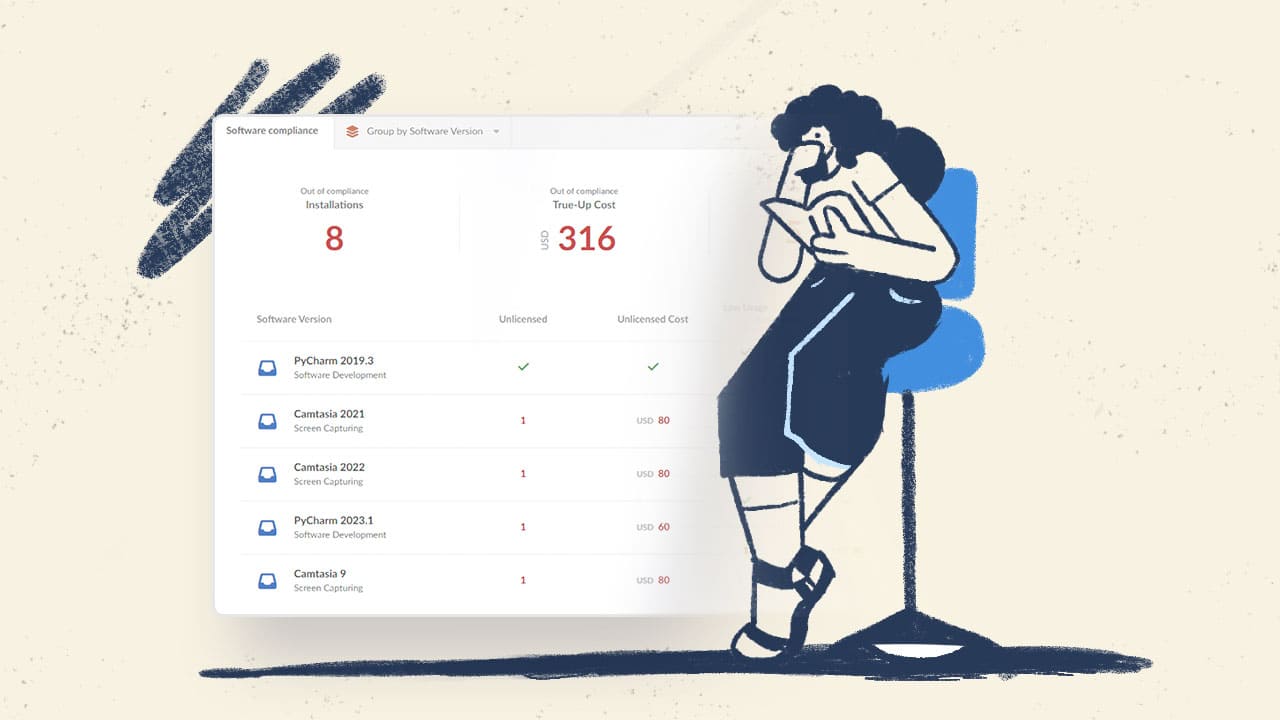Vendor Management defines the strategic oversight and cultivation of relationships with third-party suppliers, designed to maximize value while strictly minimizing risk.
This end-to-end process covers the entire lifecycle, from selecting the right partners, negotiating contracts, and onboarding, to rigorously monitoring performance and controlling costs to ensure full alignment with business objectives.
Ultimately, executing effective Vendor Management is the key to regulating spending, guaranteeing consistent service quality, and mitigating the impact of potential operational disruptions.
What is Vendor Management?
Vendor Management is the process of overseeing and optimizing the relationship an organization has with its external suppliers. It includes selecting vendors, negotiating contracts, monitoring performance, ensuring compliance, and maintaining strong, healthy partnerships that support business goals.
The term is sometimes used interchangeably with Supplier Management, Vendor Relationship Management, or Third Party Vendor Management. All refer to the same idea: managing the companies that provide goods or services to your organization in a structured and efficient way.
What does Vendor Management include?
Vendor Management covers all the activities needed to work effectively with external suppliers. It helps organizations choose the right partners, set expectations, and ensure vendors deliver what the business requires. The main activities include:
- Business needs identification: understanding what products or services the organization requires.
- Vendor evaluation and selection: comparing suppliers and choosing the best fit based on capabilities, cost, and value.
- Contract negotiation: defining terms, pricing, deliverables, and service levels.
- Vendor onboarding: integrating the supplier into internal processes and systems.
- Performance monitoring: tracking service delivery against agreed KPIs or SLAs.
- Risk and Compliance Management: verifying due diligence items and ensuring regulatory, financial, and security alignment.
- Cost and contract reviews: analyzing spend, managing renewals, and optimizing agreements.
The Vendor Management lifecycle
The Vendor Management lifecycle follows a simple sequence of steps that help organizations work effectively with external suppliers. While every company can adapt or expand the process based on its size or industry, the stages below represent a standard, easy-to-follow model.
This lifecycle includes:
- Business needs identification.
- Sourcing and due diligence.
- Contracting and onboarding.
- Performance, Risk Management, and renewal.
- Vendor offboarding.
#1: Business needs identification
Any Vendor Management process begins by defining what the organization actually needs. This includes clarifying requirements, expected outcomes, budget, and the criteria that will guide vendor evaluation. A clear scope ensures that sourcing efforts stay focused and efficient.
#2: Sourcing and due diligence
Once needs are defined, organizations identify potential vendors, compare their proposals, and assess capabilities, pricing, and risks. Due diligence here is essential and covers financial stability, security practices, compliance alignment, and service quality.
#3: Contracting and onboarding
After selecting a supplier, the next step is negotiating terms, pricing, roles, and SLAs. Once the agreement is in place, onboarding integrates the vendor into internal systems, communication channels, and workflows so the partnership can operate smoothly from day one.
#4: Performance, Risk Management, and renewal
Throughout the relationship, performance is tracked against KPIs and SLAs to ensure the vendor delivers as expected. This stage also covers ongoing Risk Management and periodic reviews to decide whether to renew the contract, adjust terms, or consider alternatives.
#5: Vendor offboarding
When a relationship ends, a structured offboarding process ensures a clean and secure transition. This includes removing access, completing outstanding tasks or payments, securing or deleting shared data, and documenting lessons learned for future vendor decisions.

Core elements of a Vendor Management strategy
A strong Vendor Management strategy combines clear governance, defined roles, vendor segmentation, measurable performance indicators, and consistent communication.
These are core elements that appear in most programs, although the full set of components can vary depending on what each organization considers strategic. The goal is to provide a solid foundation that any team can adapt to its own needs.
Governance, roles, and ownership
A successful program starts with clear governance. This means defining who makes decisions, what policies apply, and how different teams participate in the process. Procurement, finance, IT, risk, and legal all play a role in evaluating vendors, approving contracts, and ensuring compliance.
Establishing ownership and standard procedures creates consistency, reduces ambiguity, and ensures every supplier is managed according to the same expectations.
Vendor segmentation and risk tiers
Not all vendors have the same impact on the organization, which is why segmentation is essential. Classifying suppliers by criticality, spend, and risk exposure helps determine how much oversight each relationship requires.
High-risk or strategic vendors may need deeper due diligence, stricter controls, and more frequent reviews, while low-impact vendors can follow a lighter process. Segmentation ensures resources are focused where they matter most.
Metrics, SLAs, and communication
Vendor performance relies on clear expectations and ongoing communication. Defining KPIs and SLAs provides measurable standards to evaluate service quality, delivery times, costs, and compliance. Regular check-ins help maintain alignment, address issues early, and strengthen the relationship.
With shared metrics and a consistent communication cadence, organizations can track progress, improve collaboration, and make informed decisions about renewals or changes.
Vendor Performance Management
Ongoing Performance Management is vital to ensure vendors continue to meet your standards. Identifying and nurturing strategic vendors (those who consistently perform well) is especially important.
A data-driven impact analysis solution is ideal for quantifying the broader economic value of supply chains, enabling organizations to understand not only how vendors perform operationally but also how they contribute to wider business growth, job creation, and community impact. Involving these top-performing vendors in policy development and decision-making can enhance your overall Vendor Management strategy.
Vendor Management vs. related disciplines
Vendor Management often overlaps with other business functions, so it’s important to clarify where each one begins and ends. These distinctions help avoid confusion and ensure every team understands its role.
Vendor Management vs. procurement
Procurement focuses on purchasing goods and services, negotiating prices, and managing the transactional side of buying. Vendor Management goes further. It oversees the entire relationship with the supplier, including performance, risks, communication, and long-term value.
Vendor Management vs. third party Risk Management (TPRM)
Third Party Risk Management, or TPRM, is specifically about identifying, assessing, and monitoring risks that come from working with external parties, such as security, financial, or compliance risks. Vendor Management includes risk considerations, but its purpose is broader: managing the full lifecycle of vendors, not only their risk exposure.
Vendor Management in IT and SaaS environments
While Vendor Management applies to any industry, it becomes especially important in IT and SaaS environments where organizations rely on external providers for critical systems, infrastructure, and services. These vendors influence uptime, security, compliance, and operational continuity.
Because the ecosystem is so dynamic, IT teams need visibility into who provides what, how much it costs, and how each vendor affects daily operations. A structured approach to IT Vendor Management helps reduce risk, keep spending under control, and maintain strong service quality.
Managing IT and SaaS vendors
Managing IT and SaaS vendors includes handling licenses, subscriptions, cloud services, and managed service providers. These vendors often support core systems, so understanding costs, renewal cycles, and usage patterns becomes essential for effective oversight.
At the same time, IT vendors introduce security, data, and compliance considerations. This means teams must pay attention to performance metrics, contractual obligations, and risk exposure to maintain control of their IT environment.
Linking vendors, assets, and contracts
Connecting vendors with the assets and contracts they support gives organizations a clearer view of dependencies. This makes it easier to understand how each supplier contributes to the IT landscape and where potential gaps or risks might appear.
With the right Vendor Management system, this visibility becomes much simpler. InvGate Asset Management allows organizations to record vendors, assets, and contracts in a unified inventory, creating a single source of truth that supports better decisions and smoother operations.

Connecting Vendor Management with service workflows
Vendor involvement is common in IT service operations, especially when handling escalations, maintenance requests, or approvals. Linking Vendor Management with service workflows ensures requests move efficiently and external parties are engaged at the right time.
Solutions like InvGate Service Management make this easier by allowing teams to build custom workflows that automate tasks, route issues to vendors, and document every interaction. This reduces manual work and strengthens collaboration across the entire service process.
How to start improving Vendor Management
Improving Vendor Management doesn’t require a full redesign. A few Vendor Management best practices can create immediate structure and visibility.
The criteria below are not the only ones an organization can use, but they offer a simple and effective starting point for building a more organized and consistent vendor program.
#1: Map your current vendor landscape
The first step is understanding which vendors your organization works with, what services they provide, and how much they cost. This includes reviewing contracts, renewal dates, responsibilities, and any associated assets or systems. A simple inventory often reveals duplicated services, outdated agreements, or vendors that no longer add value.
Once the full landscape is visible, it becomes easier to identify risks and opportunities for optimization. This clarity also helps prioritize which relationships require more oversight and which ones can follow lighter management processes.
#2: Define ownership and governance
Clear ownership ensures that every vendor has someone responsible for its performance, communication, and contract oversight. Assigning roles for procurement, IT, finance, legal, and Risk Management reduces confusion and creates accountability throughout the relationship.
Governance provides the structure behind these roles. Basic policies for due diligence, contract reviews, performance evaluations, and risk management help teams stay aligned and maintain consistency as the vendor portfolio grows.
#3: Standardize processes and choose tools
Standardizing how vendors are evaluated, contracted, and monitored makes the entire program more predictable and easier to scale. This includes creating templates, defining renewal procedures, and setting simple performance metrics that guide everyday decisions.
Technology plays an important role in supporting these processes. Tools like InvGate Asset Management and InvGate Service Management help centralize vendor information, connect suppliers to assets and workflows, and automate tasks such as approvals, escalations, and contract follow-ups.
Conclusion
Improving Vendor Management doesn’t have to be complex. With clear processes, the right level of oversight, and better visibility into vendors, assets, and contracts, organizations can reduce risk and strengthen every supplier relationship.
If you want a simpler way to manage vendors and connect them to your IT environment, InvGate Asset Management offers a unified platform to centralize information, automate tasks, and stay ahead of renewals. Start your free 30-day trial to see how it can help streamline your Vendor Management program.















